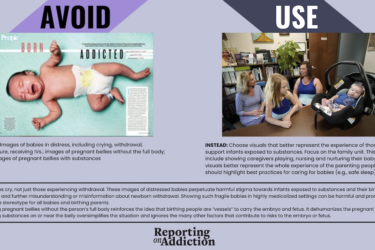
The mental health of students has been of particular concern during the COVID-19 pandemic, with some students more severely affected by the lockdowns and safety restrictions than others. Particularly impacted are youth enrolled in special education, a population already disproportionately beset by mental illness and school suspensions.
Critics say schools generally have neither addressed nor been adequately equipped to effectively manage children with extraordinary mental health needs.
Much of the problem results from special education students’ government-mandated individualized learning programs (IEP) being more centrally focused on their academic deficits and disabilities than their mental health diagnoses or treatment, says Mental Health America CEO and President Paul Gionfriddo.
Gionfriddo wrote the 2012 Health Affairs essay, “How I Helped Create a Flawed Mental Health System That’s Failed Millions – And My Son,” and the 2014 policy-focused memoir, “Losing Tim: How Our Health and Education Systems Failed My Son with Schizophrenia,” (Columbia University Press).
“Things have not changed a lot,” Gionfriddo says, since his son, now in his mid-30s, struggled through his Connecticut school days. He became ill when he was 5 but wasn’t diagnosed until age 16.
Several factors worsen certain aspects of special education for students with mental illness, Gionfriddo, a former Connecticut state legislator, added:
- The 1975 Individuals with Disabilities Education Act has never been fully funded, though the topic did surface on the 2020 campaign trail to Joe Biden’s nomination as the Democratic presidential candidate.
- School districts are not required to report mental illness data among special education students, though they do report who is enrolled in special ed.
- The numbers that do exist suggest a substantial undercount of students who’d both be deemed mentally ill and needing special education.
A JAMA Pediatrics study based on the 2016 National Survey of Children’s Health of more than 50,212 infants through 17-year-olds suggested that one in six students (16.6%) had a mental health disorder. But U.S. Department of Education data showed that roughly 344,000 (0.7%) of the nation’s roughly 56 million students had an individualized education program that sometimes listed a mental disorder that adversely affected their learning capacity, according to Mental Health America’s “The State of Mental Health in America 2021“ report. The report ranks, state by state, the numbers of students with IEPs and the number receiving or not receiving mental health treatment.
The most recent federal education department’s tally of students granted IEPs follows a trend, says Mental Health America’s Gionfriddo. “Generally, the numbers of students with IEPs have been declining for the last 20 years,” he noted. “And that isn’t because kids are mentally healthier than they’ve ever been before.”
It is suspected that the high cost of schooling for students with mental disorders leads some school officials to not certify such students as eligible for special education and related services. Instead, many of the students in question often wind temporarily suspended or permanently expelled for classroom or campus infractions rooted in the fact that they have a mental illness: “It becomes ‘This must just be a bad kid’ versus ‘This is an outward manifestation of clinical depression,’” Gionfriddo said.
“It’s the rhetorical question I ask all the time: ‘How can we settle for this?’” he said.
Curating federal and other data, the Child Mind Institute has documented the impact of mental health illness on schools, including expulsions of students as young as kindergarten-age who are believed to suffer mental disorders. The institute also has documented how often youth with mental illnesses are charged with infractions that land them in the juvenile justice system. Disproportionately, that system more harshly punishes poor kids of every race, children of color of every income, including black males, and punishes females, overall, more harshly than it punishes white males accused of the same infractions in school and outside of school. The disproportionality of mental illness among the incarcerated and persons otherwise in the criminal justice system compared to those never involved in that system is well documented.
Gionfriddo cited as one striking example the 17-year-old who shot 17 people to death the 2018 Parkland, Fla. school shooting. “They suspended him … and told him to go to adult education instead of coming to that high school,” he said. “They should have put in in residential treatment. They [presumably] didn’t want to pay for that; a residential treatment program would have cost hundreds of thousands of dollars a year … nobody thought he would come back and start killing people.
“We are operating within all these boxes, these different silos. That has got to change,” he said. “What we’ve ignored is that these kids are people, with all kinds of things going on in their lives.”
Resources
- American Psychological Association has published special guidance on youth mental health during Covid-19
- Black School Psychologists and the Association of Black Psychologists have challenged the disproportionate number of Black students in special education, the treatment they may or may not receive while there and their rates of expulsions/suspensions
- Centers for Disease Control and Prevention has published several reports on child and adolescent mental health
- Children & Schools journal, which, among other research, has explored trauma-informed mental health care and care outcomes for, among others, at-risk urban and rural youth, suicide prevention, etc.
- National Association of School Psychologists, which, among other analyses, has explored the costs of providing mental health services to students and the link between mental health and learning
- National Center for School Mental Health at the University of Maryland School of Medicine has sponsored webinars on topics such as racial stress and trauma among students and trauma-responsive care for younger students.
- This National PTA webinar, Caring for Every Child’s Mental Health: The Signs, Strategies, and Services Families and Schools Need, was presented in collaboration with the National Association of School Psychologists.
- National School Boards Association issued guidelines on what public schools are legally bound to provide for mentally ill students. It recently weighed in on risks of depression, a driver of suicide and suicidal ideation, among all students, not just those in special education.
- Pew Research Center has gauged the adverse impact of distance learning during the pandemic on students with mental and other disabilities. Here’s a November 2020 NPR piece on the topic.
Story ideas
- The University of Maryland-Prince George’s Mental Health Initiative is among a handful of projects nationwide enlisting clinicians, caseworkers and similar professionals to minimize the risk of Prince George’s County students with mental illness being needlessly funneled into special education classes that do not ensure their academic success.
- This December 2019 Education Week piece includes a state-by-state interactive map showing the percentage of all students enrolled in special education. How many of those students also have individual education programs that adequately address their mental and behavioral health needs?
- Beyond the elementary and secondary education realms, colleges also grapple with the mental health of their students. The 1990 American With Disabilities Act (ADA) mandated that higher education institutions create specified plans for managing students with psychiatric disabilities who were evicted from college dorms for having a mental health crisis or had had professors refuse to allow make-up exams for students whose illness required them to be hospitalized, according to a joint report from Disability Rights California and Mental Health Advocacy Services, Foundational to those ADA provisions was a 1973 Rehabilitation Act guidance on the “civil rights of students with hidden disabilities.” How do things stand today, especially amid Covid-19?







